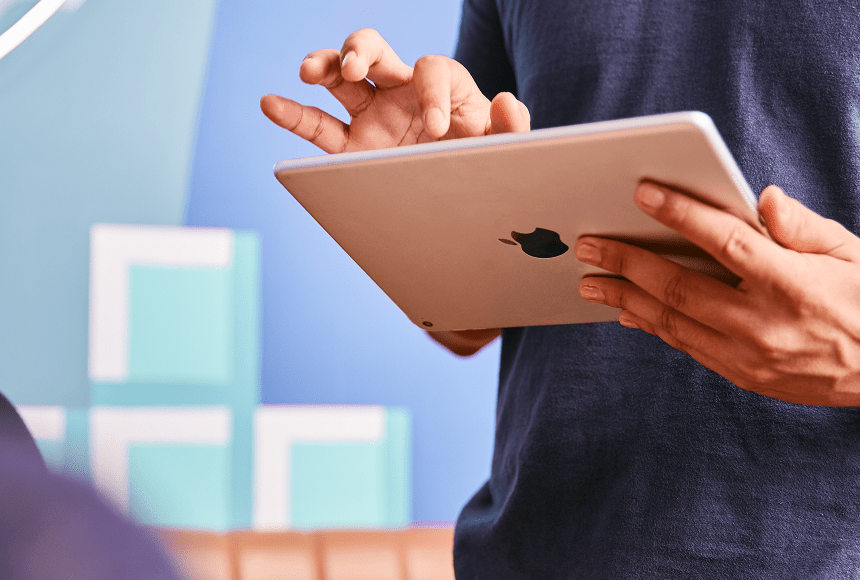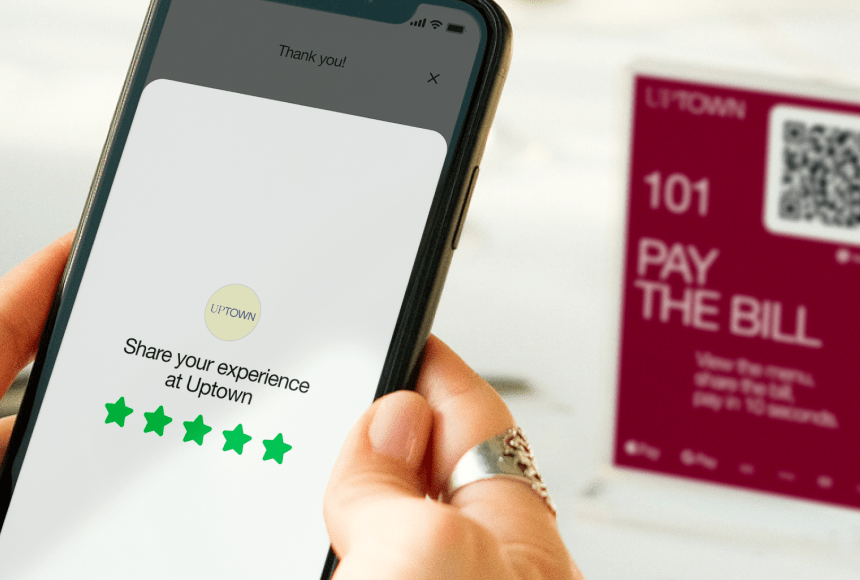
Taking Gratuities to the Next Level for Greater Efficiency and Morale
The Rise of Digital Payments
Cashless, contactless, and convenient—these words describe a shift happening across the restaurant industry. Whether it’s using a smartphone to order, scanning a QR code for the menu, or tapping a card to pay, diners increasingly rely on technology for a frictionless experience. Tips are no exception. According to the National Restaurant Association, a majority of restaurant-goers now prefer digital payment options (source), and that openness naturally extends to how they leave gratuities.
But this shift toward digital tipping isn’t only about meeting guest preferences; it also delivers tangible benefits to managers, servers, and even the bottom line. By switching from a purely analog tip system—envelopes, manual count-outs, a haze of end-of-night confusion—to an automated, transparent one, you can remove common pain points and set your team up for success.
Below, we’ll dive into why digitizing tips can transform your day-to-day workflow, elevate staff satisfaction, and ultimately shape a more efficient, guest-friendly environment.
1. Cutting Down on End-of-Shift Chaos
Every restaurant manager knows the tense dance at closing time: staff counting bills in the corner, discussing who covered which table, or pointing out a missing portion for the dishwasher. Sometimes it all gets sorted in minutes, but sometimes disagreements bubble up, leading to frustration on a night that should be winding down.
- Automatic tracking: With digital gratuities, each tip is recorded the moment the guest leaves it, eliminating the need to pool cash at the shift’s end.
- Consistent calculations: No more haggling over how to split that group tip. The system allocates percentages based on rules you set—like hours worked, role, or sales generated.
- Faster closing: When staff can see their tip totals in real time, they don’t have to wait around counting and reconciling cash, which means they get home sooner.
This new level of efficiency also cuts out accidental miscounts, ensuring that your closing routine is as straightforward as possible.
2. Building Transparency and Staff Trust
One of the most common sources of tension in restaurants comes from tip distribution. Did the bar really get the right share? Did that large table’s gratuity make it to the people who assisted? When tips stay digital, you have a clear data trail to prove who earned what and why.
- Open records: Many platforms let staff see how gratuities are allocated, preventing the suspicion that management is arbitrarily dividing the money.
- Fewer disputes: Servers can track exactly how a special event’s automatic gratuity was split, for instance, or whether a particular shift paid more than usual.
- Morale boost: A transparent tip system fosters fairness, which goes a long way toward building a cohesive, happy team.
When staff trust the process, they can focus on delivering amazing service—knowing their efforts will be rewarded accurately.
3. Saving Time and Reducing Human Error
Picture this: at a busy lunch shift, your team processes dozens of receipts. In the rush, a server might accidentally put a gratuity on the wrong check or forget to note a tip for a bar tab. Multiply those errors by weeks or months, and you’re facing a serious accounting headache.
- Digitized input: The software registers tips as part of each transaction, reducing slip-ups caused by manual entry.
- Accurate reporting: You can generate quick end-of-day or end-of-month summaries that detail total gratuities, ensuring your books are always up to date.
- Better forecasting: With cleaner numbers, you can forecast labor needs or even adjust your menu strategy based on average tip trends.
That daily precision saves managers from playing detective later. Instead, you can focus on tasks that drive growth—like planning a new seasonal dish or refining your marketing.
4. Streamlined Payroll and Tax Compliance
Handling tip credits, ensuring staff make minimum wage, and logging everything for taxes can be tricky—especially if you rely on manual calculations. If servers don’t report tips properly, you might run into legal trouble or shortchange employees. By integrating digital tips with your payroll system, you keep everything above board.
- Direct data flow: Many solutions automatically log tip amounts into the payroll platform, removing guesswork about who received how much.
- Instant compliance checks: You can confirm that each staff member meets wage requirements in real time, rather than discovering an issue after monthly reporting.
- Audit protection: Should authorities investigate, detailed logs prove your restaurant followed proper protocols, saving you from costly fines.
In a heavily regulated industry like hospitality, this blend of automation and transparency goes a long way in reducing risk.
5. Appealing to the Digital-Savvy Diner
Over the past few years, more diners have adopted “scan and pay” behaviors, whether via QR codes on the table or contactless credit card payments. If your tip process remains stuck in the past—requiring cash or a scrawled signature—it clashes with the modern, frictionless vibe many customers expect.
- QR code synergy: If guests scan a code to see the menu or pay their bill, it’s a seamless step to suggest a tip right then and there.
- One-tap generosity: Digital tipping often presents standard tip suggestions, like 15%, 18%, or 20%. Many folks choose these defaults, which can lead to higher tip averages overall.
- Impression of innovation: A forward-thinking approach can set you apart, especially if you operate in a bustling, competitive market where brand perception matters.
By embracing digital tips, you’re effectively telling customers, “We value your time and convenience.” That message resonates loudly with today’s smartphone-carrying public.
6. Opening the Door to More Revenue
It might sound surprising, but digitizing tips can indirectly boost your restaurant’s profitability. How? Because an efficient tip system that staff trust can translate into better service, which in turn leads to higher check averages and more repeat customers.
- Higher staff morale: When employees know they’ll get their fair share quickly, they’re more motivated to sell specials or premium add-ons.
- Improved table turnover: Digitizing tips often goes hand in hand with digital payments, making the checkout faster so you can seat the next group sooner.
- Repeat business: Diners appreciate convenience, so they’re more likely to return—and possibly recommend you to friends.
Better service, faster turnover, and stronger loyalty can work together to significantly lift your bottom line over time.
7. Consistency for Large Parties and Events
When you host banquets, birthdays, or corporate gatherings, the gratuity aspect can get complicated. Do you add a service charge? How do you divide tips among staff who may not even be present at the end of the night? Digital solutions ease these logistics.
- Auto-apply gratuities: If you set a policy for large groups—like 18% added automatically—the system calculates it instantly. No confusion, no guesswork.
- Advanced splits: The software can distribute a chunk of that included gratuity to the back-of-house or extra servers who came in for the event.
- Less end-of-night hassle: For big parties that wrap up late, your staff won’t have to do complicated math. The tip distribution is already settled.
This consistency ensures that everyone involved gets proper credit for their contributions, whether they’re on the floor or plating dishes in the kitchen.
8. Real-Time Insight into Staff Performance
A bonus of digital tipping is the data it provides. When you see patterns—like certain servers who consistently bring in higher tips on weeknights or noticeable dips in gratuities during a specific shift—it’s easier to take action.
- Performance metrics: Link tip totals to the number of tables served, letting you identify top performers who could mentor newer staff.
- Refined scheduling: If certain shifts yield more tips, you might align your best servers to cover them, improving the guest experience while boosting overall sales.
- Team-building opportunities: Data can help you spot if a new hire is struggling. Pair them with an experienced colleague, so they learn how to win guests over and earn bigger tips.
Armed with these insights, you’ll make smarter personnel and scheduling decisions, shaping a more engaged, efficient workforce.
9. Minimizing Cash-Handling Risks
Handling physical currency brings inherent risks—miscounts, theft, or even health concerns in a post-pandemic world. While you may not ditch cash entirely, relying on it less for gratuities can mitigate these challenges.
- Reduced exposure: Less cash on hand means a smaller target for theft, whether internal or external.
- Safer environment: Handling dirty bills or coins can be unappealing in a sanitary-conscious era. Digital tipping aligns with a cleaner, more hygienic dining experience.
- Simplified banking: Fewer trips to the bank, fewer nights worrying about balancing a til, and fewer awkward coin shortfalls when staff need change for tips.
All these minor headaches vanish or are significantly reduced once you let an app or integrated POS feature take the reins.
10. Future-Proofing Your Restaurant
Look around, and you’ll see technology reshaping the restaurant industry at nearly every step: from online reservation platforms to self-order kiosks. Digitizing tips is another piece of that puzzle, helping you keep pace in a world where convenience and transparency count more than ever.
- Matches consumer habits: People order cabs, pay bills, and shop online with just a few taps—why not tip the same way?
- Attracts a younger demographic: Millennials and Gen Z often prefer minimal friction. Removing a clunky paper tip process can win them over.
- Flexibility for changing norms: If new regulations or tipping models (like service-inclusive pricing) emerge in your region, a digital system can adapt faster than physical tip jars and manual calculations.
Shifting to digital tipping now positions you to pivot more smoothly as the industry evolves, which can be crucial for long-term viability.
Making the Move
If you’re sold on the idea of digitizing tips, the next steps involve choosing a platform or feature that integrates seamlessly with your existing POS or payment system. Focus on solutions that are intuitive for both staff and diners, and that offer robust reporting. Train your team to understand how it works, so they can explain it to customers with confidence.
Once in action, keep an eye on a few key metrics: Are table turnover times decreasing? Do average tip percentages inch up? Are employees happier (or at least less stressed) at shift’s end? If the data suggests you can tweak certain features—like adjusting how service charges apply to big groups or refining tip distribution for bartenders—don’t be afraid to experiment. A flexible digital solution lets you adapt quickly without rewriting your entire approach to compensation.
At its core, digitizing tips simplifies and clarifies a process that’s traditionally riddled with inconveniences, potential mistakes, and friction between staff. It frees you, as a manager, to concentrate on what you do best: running an outstanding operation, delighting guests, and crafting memorable dining moments. In an era of technological leaps, letting software handle the nitty-gritty of tips isn’t just a novelty—it’s a strategic step toward better relationships and better results. And that’s a recipe most restaurant owners are more than happy to embrace.
Find out more today
Drop us your details below and we’ll reach out within the next 24h
More tips means a better service.
More tips mean better guest-experience, and better staff-retention.




